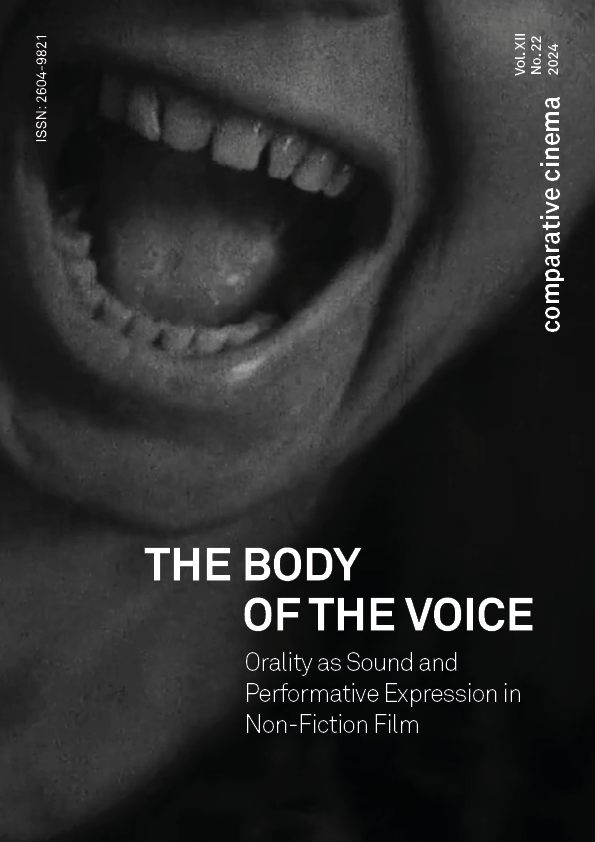Abstract
Working with sound and silence is central to the sensory experience achieved in Chantal Akerman’s cinema. At times, there is an almost complete absence of words, while at others her voice is central, or the sounds of the places she encounters in her cinematic exploration stand out. I wonder what contributions might be made to the work with sound and silence in Akerman’s films, and how do these contributions have an influence on the bodily experience of the viewer. I will focus on a comparative analysis of D’Est (1993), Là-bas (2006), and Tombée de nuit sur Shanghai (2007) by Akerman, especially revealing in their work with “haptic silence,” “echoes of psalmody,” and “sound portrait.” I will draw on previous studies on sound work in the director’s cinema and on the importance given to the corporeal in feminist film theory in recent decades.
Keywords
Rights

This work is licensed under a Creative Commons Attribution-NonCommercial-ShareAlike 4.0 International License.
(c) Comparative Cinema, 2024



